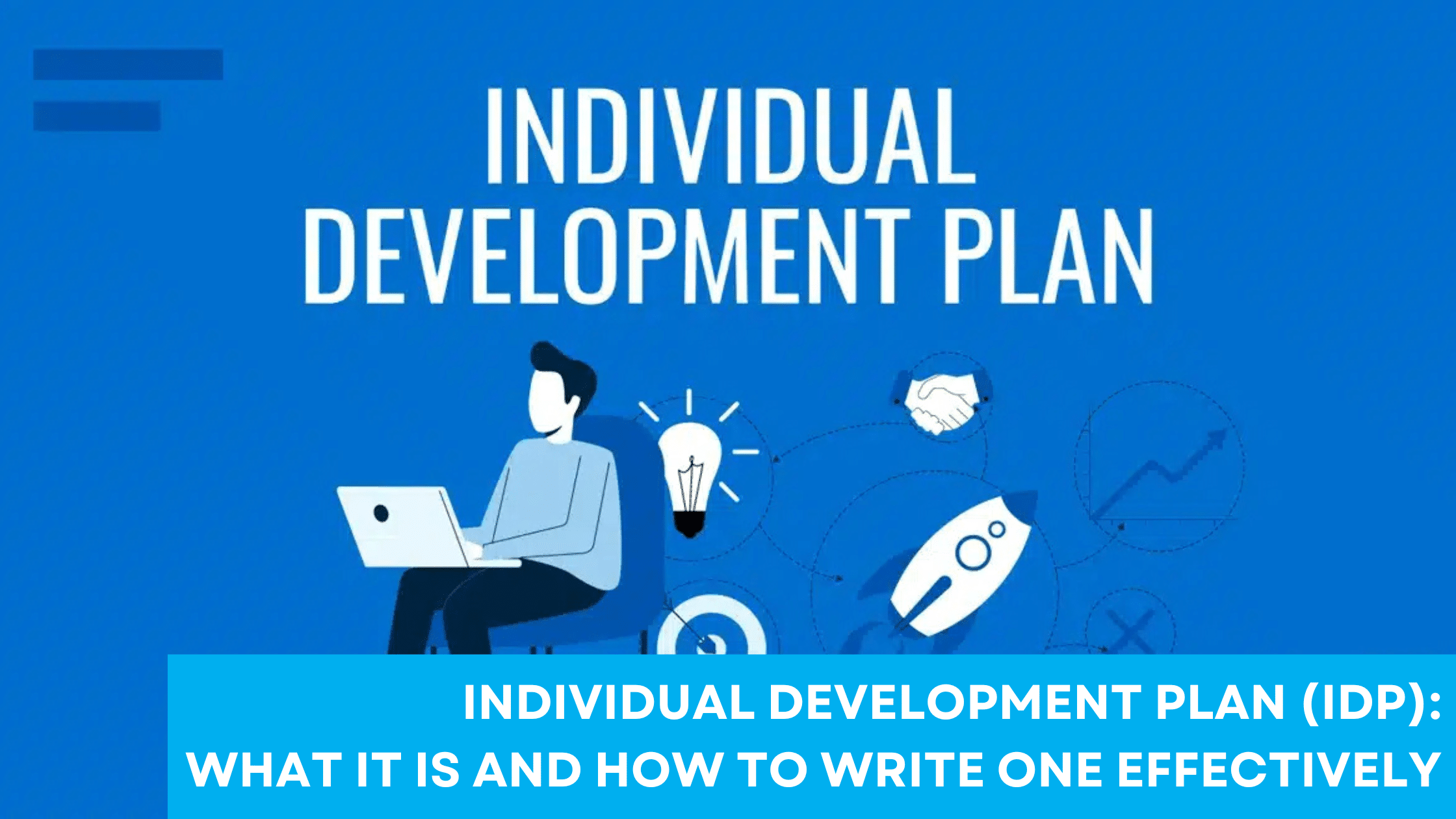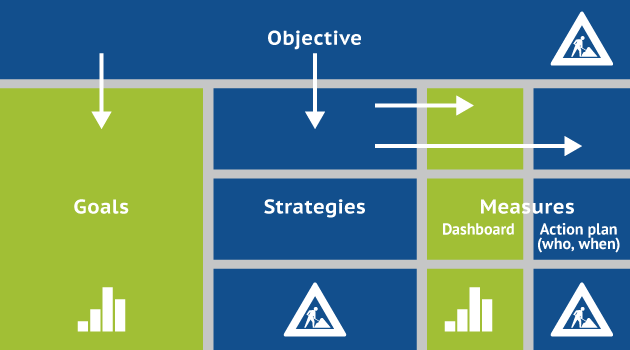Key Benefits of an IDP:
- Encourages clear goal setting
- Provides a step-by-step path for improvement
- Tracks progress over time
- Can be customized to fit different needs
Employees and employers often work together on individual development plans so that goals match both personal interests and career paths.
This helps align personal growth with what matters to the organization.
To make a good plan, keep goals simple, specific, and realistic.
Regular check-ins and updates help people stay motivated and tweak their plans as they go.
A strong IDP often includes:
| Element | Purpose |
| Goals | Set direction |
| Action Steps | Outline what to do |
| Resources Needed | List tools, courses, or support |
| Deadlines | Set time frames |
| Progress Checks | Track and review improvement |
IDPs are useful for anyone who wants to improve in a structured way.
Updating the plan regularly helps keep it relevant and effective.
What Is an Individual Development Plan (IDP)?
An Individual Development Plan, or IDP, is a written tool that helps employees plan for their growth at work.
It helps people set clear goals, learn new skills, and break down the steps to get better at their job.
Purpose of an IDP
The main purpose of an IDP is to support career and personal development.
It helps employees and managers map out the best way for a person to reach career goals.
An IDP looks at what a person wants to learn or improve and helps turn those needs into a real plan.
Creating an IDP gives people a sense of where they are and where they want to go.
Employees can use it to track progress, find areas to focus on, and make sure they’re building the skills they need.
Managers use it to provide feedback and guidance, making growth more of a team effort.
More information is available through government agencies and workplaces, including the U.S. Department of Commerce.
Key Components of an IDP
A strong IDP has a few key parts.
First, it usually includes goals, like learning a new software or working on public speaking.
It also lists actions or activities needed to meet those goals, such as signing up for a course or working with a mentor.
Other parts may include a timeline for when each step should be finished and the resources needed, like training or support from a manager.
An IDP also tracks progress, so it’s important to review and update it often.
Here’s a simple example of how the pieces fit together:
| IDP Component | Example |
| Career Goal | Lead a team project |
| Development Need | Improve leadership skills |
| Action Step | Attend a leadership workshop |
| Timeline | By the end of the quarter |
| Resources | Workshop, online materials |
For more on these elements, check out this training and development guide.
IDP vs. PDP
An IDP, or individual development plan, is often confused with a personal development plan (PDP).
While both help with growth, they’re not quite the same.
An IDP is usually used at work and is a formal part of job performance discussions.
It ties an employee’s goals to the needs of the business or organization.
A PDP is more general and can include personal goals outside of work.
For instance, someone might use a PDP to plan for health goals or community service.
In short, the IDP focuses on job and career growth, while a PDP covers personal growth in any area.
For more details on how IDPs relate to business and career planning, check the NIH guide about IDPs.
Benefits of Creating an Individual Development Plan
An individual development plan (IDP) helps employees and managers work together to set clear goals, outline steps for growth, and track progress.
This approach supports personal growth, skill building, and alignment with organizational needs.
Clarity in Career Goals
An IDP helps employees see exactly what they want to achieve in their careers.
By writing down specific career goals, it becomes easier for people to focus their energy and resources.
This process makes the steps they need to take more visible.
They can spot where they are now and where they want to be.
For example, maybe they want to move into a management role, gain new technical skills, or just take on more responsibility.
Managers can also better understand what their team members aim for.
With open communication, both employees and managers can set realistic goals and make plans to reach them.
Setting career targets encourages honest discussions about strengths and areas for improvement, leading to more effective career planning.
Structured Career Pathways
A strong IDP lays out a clear path for career progression.
Employees get a step-by-step guide to build the skills and experience needed for their target role.
This plan can include scheduled training, job assignments, or mentorships.
Mapping out a detailed career path makes it easier to avoid confusion and stay motivated.
Organizations also benefit from knowing where their employees stand and how they can contribute to bigger goals.
Having structured career pathways supports both individual growth and the company’s long-term mission.
It also helps identify and fill skill gaps before they become a problem.
Enhanced Professional Development
IDPs promote faster and more focused professional development.
Employees can identify skills they’re missing and create a targeted approach to improve.
This often means taking specific courses, projects, or certifications that align with personal goals and business needs.
They see regular feedback on their progress, which helps adjust strategies and keeps development on track.
Managers can use IDPs to support employees, recommend resources, and track growth over time.
In turn, the organization benefits from a workforce that’s more skilled, flexible, and ready for future challenges.
Regular use of IDPs boosts the impact of professional development efforts across the whole team.
How To Write an Effective Individual Development Plan
Writing an effective Individual Development Plan (IDP) helps people understand where they are, spot what they need to grow, and set clear steps to achieve career and personal ambitions.
Careful planning leads to stronger skills, real progress, and long-term career satisfaction—or at least that’s the hope.
Self-Assessment and Reflection
A strong plan starts by looking inwards.
Individuals should reflect on their accomplishments, day-to-day skills, and areas needing improvement.
This self-assessment gives honest feedback about current strengths and weaknesses.
Several methods help with this.
Common options are personal checklists, feedback from colleagues, or self-evaluation forms.
Reviewing past performance reviews or recent projects can show patterns of achievement or obstacles faced.
Asking questions like “What tasks do I do well?” and “Where do I feel stuck?” can guide the process.
People should also factor in their interests and career values.
For more detailed guidance on reflection and IDP planning, Yale University offers a useful step-by-step guide.
Setting SMART Objectives
Clear objectives are easier to achieve if they follow the SMART method: Specific, Measurable, Achievable, Relevant, and Time-bound.
Specific objectives define what exactly is to be accomplished.
Measurable steps help track progress.
Achievable means goals should be realistic within available time and resources.
Relevant objectives focus on what matters to the person’s job or future career.
Time-bound goals have a set deadline.
A SMART objective could be: “Complete an online communication skills course in three months to improve presentation performance.”
Writing objectives in this clear way gives each step focus and urgency.
More examples and templates to structure these objectives are available through sites like AIHR.
Identifying Skills and Competencies
After self-assessment, it’s important to know which skills and competencies need attention for success.
Skills are specific abilities—like coding, writing, or data analysis.
Competencies are broader, like problem-solving, teamwork, or leadership.
Start by listing job requirements or industry trends.
Compare these with current strengths to spot any gaps.
Organize skills into two groups:
| Technical Skills | Interpersonal Skills |
| Data analysis | Public speaking |
| Technical writing | Leadership |
| Project management | Teamwork |
Once identified, these gaps show what training or experiences to pursue.
Updating this list regularly helps keep development plans relevant as careers change.
Establishing Measurable Goals
A development plan really works only when your goals feel clear, concrete, and measurable. Vague statements like “get better at public speaking” won’t cut it—you need to aim for real results.
For example:
- “Deliver two presentations to team meetings this quarter.”
- “Earn a project management certificate by December.”
- “Meet with a mentor monthly for feedback.”
Use action verbs and add a timeline to each goal. Tie every goal to the skills or competencies you’ve already identified so you know your actions matter.
Many companies use IDPs to track and record these goals. The OPM has a pretty common approach.
Planning Development Activities
Picking the right development activities helps people build useful skills and actually get closer to their career goals. Training, education, and soft skills all play a part here.
Choosing Appropriate Learning Activities
When you’re choosing learning activities, match them to your career needs and the skills you want to improve. Take a look at your short-term and long-term goals, then pick activities that fill those knowledge or experience gaps.
This could mean job shadowing, taking on a new project, or joining a professional group.
Examples of learning activities:
- Attending workshops or seminars
- Completing online courses
- Working with a mentor
- Volunteering for cross-functional teams
Set a timeline and outcome for each activity so you can actually track progress. Mixing hands-on experiences and classroom training keeps things interesting and practical.
Want more ideas? The Individual Development Plan wiki has plenty of suggestions for matching activities with goals.
Education and Training Resources
Education is a big part of most development plans. You can use online courses, local colleges, or professional certification programs to add new skills.
Lots of companies offer internal training or will even pay for outside classes.
Types of resources:
- E-learning platforms (Coursera, Udemy)
- Company training sessions
- Degree programs or certifications
- Industry conferences
Pick resources that fit your schedule and learning style. Managers can suggest programs or help you find options that match your work goals.
Good plans mix formal and informal resources so learning stays flexible. If you want a sample, check out this guide to development plans.
Integrating Soft Skills Development
Soft skills—like communication, teamwork, and problem-solving—matter a lot, even in technical roles. They really affect how you work with others and deal with challenges.
Ways to build soft skills:
- Role-playing exercises
- Communication workshops
- Group projects or presentations
- Receiving feedback from peers or managers
Adding soft skills to your plan can boost job performance and open up new career options. Regular feedback and some honest self-reflection help track your progress.
Some companies offer special training or coaching just for soft skills. For more on this, the TCNJ Individual Development Planning Guide is a solid resource.
Working With Mentors and Supervisors
Mentors and supervisors play a big role by guiding employees and sharing feedback along the way. Their support shapes your skills, builds confidence, and really helps you improve.
Finding the Right Mentor
A good mentor has experience in your field and actually wants to help others learn. Their skills and knowledge should match your goals so their advice feels useful.
When you’re searching for a mentor, look for these traits:
- Strong communication skills
- Trustworthiness
- Commitment to growth
- Relevant expertise
It’s best if your mentor is open to regular meetings and honest feedback. Some companies have formal mentoring programs, but if not, you can ask your supervisor or connect at work events.
Building a mentoring relationship takes a little time. Setting clear expectations helps both people know how often to meet and what to talk about.
A strong mentor can help you set clear objectives and get past career roadblocks. If you want examples, check out mentoring in an individual development plan.
Role of Feedback in Development
Feedback is at the heart of career growth. Mentors and supervisors point out what you’re doing well and where you could improve.
Good feedback is specific, timely, and constructive. It’s meant to show you the next steps.
Some common ways to give feedback:
- Regular check-ins
- Written notes or reports
- One-on-one meetings
- Performance reviews
If feedback feels unclear, ask for examples. Keep track of any changes you make based on advice—this helps you keep learning.
Getting feedback isn’t always comfortable, but acting on it usually helps you reach your goals faster. People who take suggestions seriously tend to see steady improvement and can update their individual development plan as they grow.
Review and Update Process for Your IDP
Keeping your Individual Development Plan (IDP) up to date matters if you want to hit your personal and career targets. A solid review process makes it easier to spot wins, fix issues, and set new challenges.
Tracking Progress Over Time
Tracking progress is key for a successful IDP. Review your goals and actions regularly—maybe every month or quarter.
A simple progress chart or checklist can show what you’ve finished. Jot down small wins and setbacks to keep motivation up and figure out where to focus next.
Managers working with teams can keep dated notes or use a shared doc for easier reviews. Setting clear timelines for each step lets you and your supervisor see if things are on track.
Regular check-ins help a lot for staying on target. The IDP process recommends this approach.
Adjusting Plans to Evolving Goals
Goals change as you pick up new skills or face new challenges. Treat your IDP as a living document—update it when things shift.
If you don’t need a certain training course anymore or a new goal comes up, update your plan right away. Make changes with clear reasons and specific outcomes in mind.
It’s smart to talk with a mentor or supervisor about any changes, especially if you’ll need extra support. Regularly updating your IDP keeps it relevant to your career and personal growth.
Just like regular review and update of the IDP helps track progress, it also makes sure your plan fits where you’re headed.
IDP Guidance for Specialized Fields
Some fields need a different approach for individual development planning. Advanced research roles and industry jobs often benefit from a more tailored IDP process.
Postdoctoral Training and Research
For postdocs, the IDP focuses on building research skills, networking, and getting ready for a tough job market. Research institutions and funders like the NIH encourage postdocs to use an IDP guide to set priorities and track progress.
Key IDP steps for postdocs:
- Identify core skills in research, teaching, and communication.
- Set goals for publishing, presenting, and grant writing.
- Plan for mentoring relationships and conference attendance.
- Review progress quarterly with mentors.
Postdocs usually use forms from their department or institution, which highlight competencies like leadership, science communication, and teamwork.
Industry-Specific IDP Examples
In industry, an IDP matches your career goals with what the company expects. You might focus on leadership, project management, certifications, or technical skills.
Looking at industry-specific IDP examples can help you set realistic goals.
Common steps in industry IDPs:
- List the company’s most valued skills, like problem-solving or client management.
- Set deadlines for learning new tools or earning certifications.
- Add on-the-job training and cross-functional projects.
- Schedule regular check-ins with supervisors to update the plan.
A solid industry IDP connects your strengths with business needs, so you grow and help the company succeed.
Resources and Tools for Building Your IDP
There are plenty of resources to help you get started with your Individual Development Plan (IDP). Good templates and digital tools make it easier to organize goals, steps, and timelines.
Templates and Worksheets
Printable templates and worksheets let you outline your IDP in a straightforward way. They usually have sections for career goals, needed skills, and specific actions for improvement.
Some templates come with checklists or fill-in-the-blank prompts, which makes planning less of a headache. Universities and government agencies often provide these for free.
For instance, the Office of Personnel Management has IDP guides for different fields. You can print or download them in PDF or Word format.
Templates typically include timelines, milestones, and space to track progress. If you update these worksheets regularly, you’ll keep your plan moving forward.
Digital IDP Platforms
Digital platforms help you create, update, and review your IDP from anywhere. Many offer goal tracking, reminders, and progress charts to keep you motivated.
Some platforms are built for schools or big companies, while others work for individuals. They may let you set deadlines, get feedback, and match learning activities to your goals.
Popular options range from simple apps to more advanced IDP planning platforms. Some even include sample IDPs or step-by-step guides for new plans.
With digital tools, you can access your IDP anytime and make changes on the fly.
Conclusion
An individual development plan (IDP) can be a really practical tool for anyone looking to grow their knowledge and skills. It points out what needs work and lays out clear steps for reaching your goals.
With an IDP, growth becomes a bit more structured. It takes those big, intimidating goals and chops them into smaller, doable actions.
- Set clear and specific goals
- Identify current strengths and weaknesses
- Plan actionable steps
- Track progress over time
- Review and adjust the plan as needed
Checking in on your IDP regularly keeps things on track. You’ll keep your goals relevant and actually within reach, which—let’s be honest—can be tough sometimes.
Both individuals and organizations can benefit from IDPs. They tie your personal growth to bigger-picture goals, which can boost motivation and real progress.



